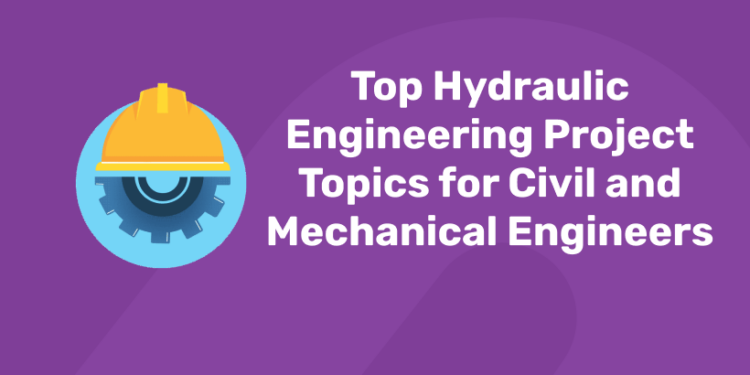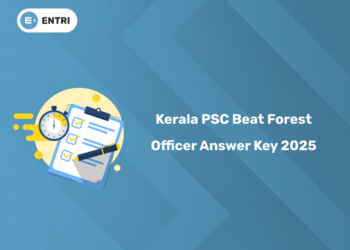Table of Contents
Hydraulic engineering is a area within the civil engineering subject that addresses the manipulate and management of water sources. In hydraulics engineering, you’ll plan and manage the waft and garage of water. You can also locate yourself brainstorming answers to address future water needs for towns or making plans river and coastal flood manipulate initiatives.
Get hands-on with our Quantity Surveyor course – sign up for a free demo!
Top Hydraulic Engineering Project Topics for Civil and Mechanical Engineers
Following are few subjects which may be used in your Project Works. You can pick out the undertaking from the list under depending in your field of hobby and your task duration.
Water Resource Management
Water Resources Management Project aims to:
(a) increase agricultural production,
(b) increase the financial viability of irrigation and drainage schemes, and
(c) reduce the chance of dam disasters and floods.
In addition, the task aims at reaching the period in-between (output) goal of contributing to the first step in the direction of the improvement of comprehensive water resource management. There are five challenge additives. Components helps gadget repair and incorporates the subsequent subcomponents:
1) restore and development of irrigation facilities;
2) restore and development of flood control and drainage centers;
3) restore of irrigation reservoirs and dams;
4) design and supervision;
5) implementation of the environmental control plan, which includes a training software introducing best practices and environmental tracking for sub-initiatives; and
6) improvement of an investment program for phases 2 and 3.
River Engineering
A “river engineering assignment” in civil engineering refers to a design and creation assignment that targets to adjust or manipulate the waft of a river through implementing structures like embankments, levees, groynes, channel modifications, or dams, mainly to manage flood manipulate, navigation, irrigation, and hydropower era, whilst considering environmental affects and the river’s herbal dynamics.
Key aspects of a river engineering project:
- Understanding the river system:
Analyzing the river’s natural drift styles, sediment delivery, and geomorphology to discover ability issues and design appropriate interventions.
- Project goals:
Defining the number one goal, whether or not it is flood protection, enhancing navigation, offering water for irrigation, or producing hydropower.
- Structural design:
Selecting and designing appropriate systems like:
- Embankments (levees): Raised earth berms along the river banks to include floodwaters.
- Groynes: Structures perpendicular to the river flow to control erosion and direct sediment deposition.
- Channel modifications: Altering the river mattress profile to improve float characteristics.
- Dams: Structures to control water ranges and generate strength..
- Environmental considerations: Assessing the ability affects on aquatic ecosystems, water pleasant, and riparian habitats, and incorporating mitigation measures.
Examples of river engineering projects:
- Floodplain management: Constructing levees and floodwalls to guard settlements from inundation for the duration of high river flows.
- River channel stabilization: Using groynes to save you financial institution erosion and keep a stable river course.
- Navigation improvement: Dredging riverbeds and constructing manual banks to facilitate boat visitors.
- Irrigation canal development: Diverting river water into canals for agricultural use.
- Hydropower generation: Building dams to harness the river’s energy potential.
Important considerations in river engineering:
- Sediment management:
Managing the movement of sediment in the river machine to avoid poor affects on navigation and infrastructure.
- Sustainability:
Balancing the want for human intervention with the maintenance of natural river methods and ecosystems.
- Monitoring and maintenance:
Regularly monitoring the performance of river engineering systems and imposing essential renovation sports
Start a rewarding career in Quantity Surveying! Book for Free Demo Classes Here!
Coastal Engineering
1.Shoreline Protection:
Design and analysis of seawalls, groynes, revetments, and breakwaters.
Impact of various coastal safety structures on sediment delivery and seaside morphology.
Evaluating the effectiveness of seaside nourishment tasks.
2. Coastal Erosion Studies:
Identifying vital erosion hotspots alongside a coastline.
Modeling wave-prompted erosion the use of numerical strategies.
Assessing the position of climate change on coastal erosion prices.
3.Near shore Dynamics:
Modeling near shore movement styles and sediment delivery.
Impact of tides and currents on coastal sediment distribution.
Investigating the effects of coastal structures on near shore hydrodynamics.
4. Marine Renewable Energy:
Feasibility research for wave strength converters or tidal energy era.
Environmental affects of marine renewable energy extraction.
5.Coastal Hazard Mitigation:
Storm surge modeling and inundation mapping.
Design of coastal flood protection systems.
Assessing coastal resilience to severe climate activities.
6. Environmental Considerations:
Impact of coastal improvement on coastal ecosystems.
Designing coastal systems to reduce ecological disruption.
Coastal wetland recovery and control
Water protection is a global situation today all around the global, with sources and makes use of of uncooked water has been the most in focus, especially in city sectors. Rapid populace boom and infrastructural development cause elevated call for and consumption of water, in conjunction with greater wastewater technology. The water-associated issues in the urban sector consist of a big amount of water loss, insufficient supply, and water nice. The immoderate use of groundwater assets in cities has caused rapid water depletion. Many towns with huge populations additionally face demanding situations in dealing with sewerage networks and wastewater treatment systems. Urban water management’s importance is improving water deliver and sanitation infrastructure by means of coping with rainwater, wastewater, and drainage structures. It additionally ambitions to manipulate waterborne illnesses and reduce the threat of water-associated dangers. It entails planning, design, and infrastructure to satisfy the city populace’s water deliver and sanitation demands.
The Process of Urban Water Management:
The urban water management machine aims to accumulate integrated control of water services in urban settlements. It calls for a holistic technique to coping with one of a kind water cycle additives and utilizing water assets maximum successfully. The urban water management gadget specifically entails the method of water supply, urban drainage, and wastewater remedy. A standard city water control system includes an underground piped community to deliver consuming water and take away wastewater. It also involves water series and garage, water transport to the treatment centers, storage and distribution centers to city areas, wastewater series and remedy, and drainage structures. The water control device specializes in the numerous and premier use of all ability resources of water, matching water great in keeping with the utilization pattern, and higher usage of herbal assets of water.
How To Choose Which Topic
1: What is the main purpose of a Bill of Quantities (BoQ)?
Key steps to selecting a project topic:
- Identify your interests:
What subjects or regions inside your area pique your interest?
- Explore current trends:
Stay up to date on latest tendencies and emerging issues to your subject thru research papers, conferences, and enterprise news.
- Brainstorm ideas:
Generate a wide variety of potential topics based on your hobbies and present day traits.
- Evaluate feasibility:
- Data availability: Can you access the vital records to behavior your research?
- Time constraints: Is the venture scope doable within your timeframe?
- Expertise and resources: Do you have the important abilties and gear to finish the venture?
- Narrow your focus:
Refine your broad subject matter into a particular studies query or hassle declaration.
- Consult with experts:
Discuss your capability topics along with your guide, professors, or enterprise experts to get remarks and guidance.
Become a skilled Quantity Surveyor and excel in your career! Free Demo Classes Here!
Master Quantity Surveying – Build a Rewarding Career Today!
Gain in-demand skills in cost estimation, project budgeting, and contract management with our Quantity Surveying Course. Learn from industry experts and boost your career in construction and infrastructure. Enroll now and take the first step toward success!
Know MoreConclusion
Hydraulic engineering consists of the software of fluid mechanics to water flowing in an remoted environment (pipe, pump) or in an open channel (river, lake, ocean). Civil engineers are basically involved with open channel flow, which is governed through the interdependent interaction between the water and the channel.
Hydraulic engineering projects are essential because they focus on managing and control of water resources, allowing the use of efficient and sustainable water for different purposes such as drinking water supply, irrigation, flood control and creating essential role in maintaining human civilization and mild Climate to the availability of water and extreme weather events.
























